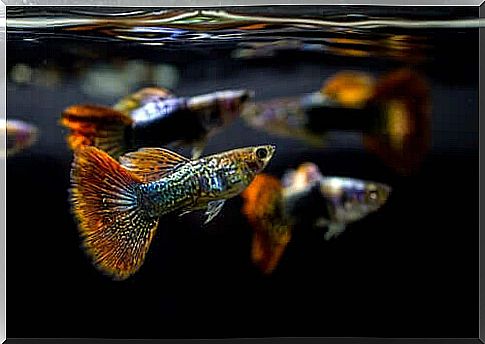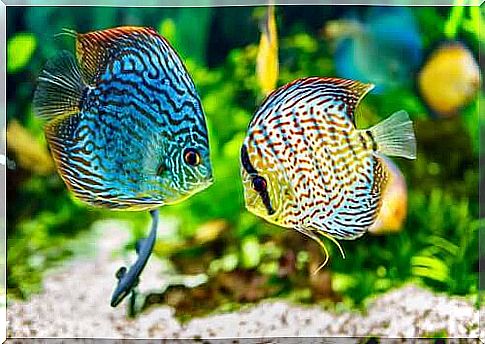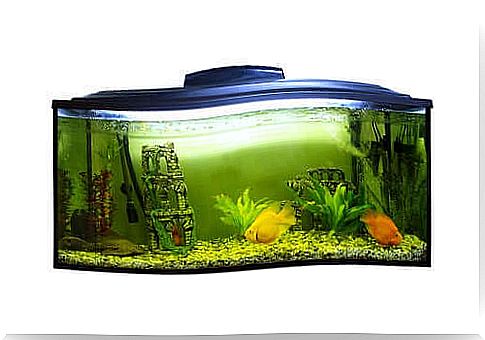The Importance Of PH In The Aquarium

To ensure the well-being of the fish in the aquarium, it is necessary to carry out good maintenance. For this, many different factors must be taken into account, such as temperature, salinity, water hardness or pH. In this article, we’ll show you the importance of pH in the aquarium, these small domestic ecosystems.
What is the pH of water?
pH is a variable that measures the acidity level of a solution and is linked to the concentration of hydrogen ions (H + ). There is a pH scale ranging from 0 to 14. The pH value 7 corresponds to neutral substances such as pure water.
Water is around neutral values, but as small as a tenth difference may seem, the effects that a change in pH has on plants and animals in an aquarium can be significant.
How to measure pH in an aquarium?
Here, we’ll show you the most effective commercial methods for measuring aquarium pH:
- PH meter or pH meter. This instrument consists of two electrodes, one for reference and one sensitive to hydrogen ions. This generates a potential difference between the two electrodes and this value is converted into pH units. To start using the pH meter, it is necessary to calibrate it before immersing it in the aquarium water.
- pH strips. They are less accurate than the pH meter, but they are very easy to use and inexpensive. It is a series of paper strips that react with a different color depending on the acidity or alkalinity of the water.
What is the ideal pH for the aquarium?
The ideal pH varies according to the species that make up the aquarium. There is no standard level for all fish, although most can be kept between 5.5 and 8.0.
- The recommended pH measurement for continental species is between 6.5 and 8.5.
- For Amazonian species such as Barrigudinho and Betta, the ideal is between 6 and 7.
- For East African fish such as African cichlids, the ideal is between 7.5 and 8.
- Goldfish, the best known fish species in the world, prefer neutral waters with a pH between 7 and 7.5.
There is also an ideal pH for aquarium plants. For example, Ceratophyllum demersum , a specimen widely used in aquariums, lives in pH conditions ranging from 6.5 to 7, while Java Moss prefers acidic waters below 7, although it survives in a wide pH range, varying from 5 to 8.
The pH is not a fixed parameter, as it can vary according to the type of substrate, food waste, plant decomposition, organic waste from fish, temperature, CO2 level… In turn, a variation of pH can influence other parameters such as water hardness.

How does pH affect fish?
Fish have physiological mechanisms to adapt to changes in pH (within a small range). When we introduce a new fish into the aquarium, it needs to go through a previous acclimatization process.
The enzyme carbonic anhydrase contributes to the regulation of the pH of the internal environment. If the blood is very acidic, for example due to an excess of CO2 in the medium, the rate of bicarbonate ions in the plasma increases to compensate for the pH imbalance.
On the contrary, the assimilation of CO2 and the elimination of bicarbonate ions contribute to lower blood pH.

This ability to self-regulate is much more developed in species that live at the extremes of pH levels. However, tropical marine fish are adapted to greater pH stability by the action of reefs, so minimal variations in this parameter (up to 0.1) can cause symptoms of acidosis or alkalosis:
- Acidosis. Occurs due to a sudden drop in pH. Fish may lose mobility, appetite, increase mucous secretion and their gills may change color. Hemoglobin can be affected, causing the animal to not breathe properly and become disoriented, gaping at the surface or, if the change is too extreme, causing it to die.
- Alkalose. It is less common, but typical when animals arrive home via a shuttle service, as the pouch that contains them, after hours, can easily become alkaline. In this case, we can also see respiratory symptoms, inconsistent swimming and pale color.
As we have seen, the pH of the water is essential for the survival and well-being of aquarium fish. Conducting weekly tests of this parameter will be essential to have a balanced aquatic ecosystem.









